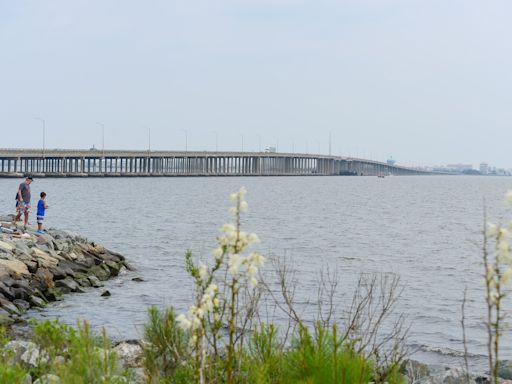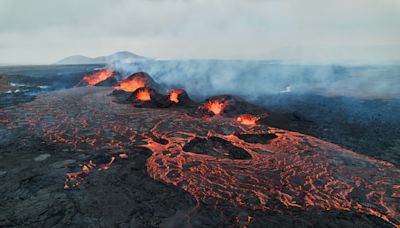Search results
A sinkhole is a depression in the ground that has no natural external surface drainage. Basically, this means that when it rains, all of the water stays inside the sinkhole and typically drains into the subsurface. Sinkholes are most common in what geologists call, “karst terrain.”
A sinkhole is a depression or hole in the ground caused by some form of collapse of the surface layer. The term is sometimes used to refer to doline, enclosed depressions that are also known as shakeholes, and to openings where surface water enters into underground passages known as ponor, swallow hole or swallet.
3 days ago · A sinkhole is a hole in the ground that forms when water dissolves surface rock. Often, this surface rock is limestone , which is easily eroded , or worn away, by the movement of water. In a landscape where limestone sits underneath the soil, water from rainfall collects in cracks in the stone.
Sinkholes typically form when naturally acidic rainwater erodes underlying bedrock, creating damage beneath the surface. Their formation is most common in easily erodible karst terrains with...
14 hours ago · A sinkhole was discovered at on Wednesday evening near the base of Ocean City's Isle of Wight Bay Bridge, Route 90. Here's what caused it, plus more.
A sinkhole is a depression in the ground that has no natural external surface drainage. Basically, this means that when it rains, all of the water stays inside the sinkhole and typically drains into the subsurface. Sinkholes are most common in what geologists call, “ karst terrain .”
Apr 8, 2024 · A sinkhole is basically a hole which appears to suddenly open up in the ground. However, the process that leads to a sinkhole is not so sudden and may have been developing over a long period.
Jun 28, 2024 · sinkhole, topographic depression formed when underlying limestone bedrock is dissolved by groundwater. It is considered the most-fundamental structure of karst topography. Sinkholes vary greatly in area and depth and may be very large.
Most sinkholes occur in places where water can dissolve the rock below the surface, for example where the bedrock is limestone, salt, or gypsum. They can collapse very quickly, or slump slowly over time. Many sinkholes occur naturally, but human activities can also cause them.
Jun 27, 2024 · By Marlene Lenthang. A massive sinkhole stretching 100 feet opened up in an Illinois park on Wednesday, swallowing a light pole in the middle of recreational fields and leaving a deep, gaping hole ...





